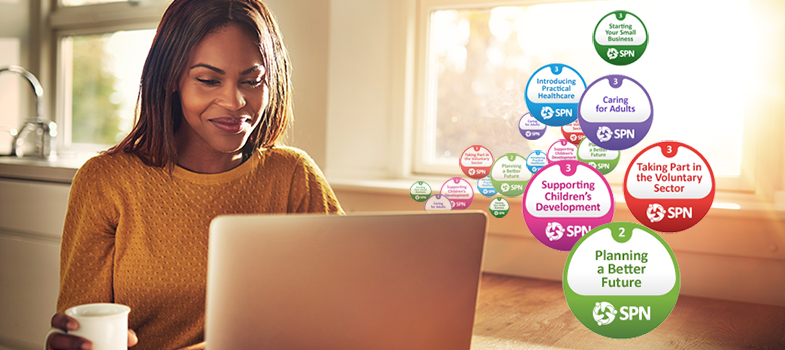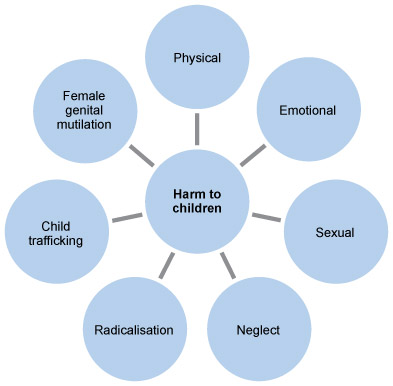7.2 Safeguarding children
Wherever you work, and even if your role is only with adults, you need to have a basic understanding and awareness of safeguarding children. A visiting family might raise your concern and you need to know what action to take. In other words ῾child protection and safeguarding is everyone’s responsibility: it is not only childcare workers that have a duty to promote the welfare of children and protect them from harm᾿ (Skills for Care, 2015c).
The following diagram outlines the types of abuse and neglect to look out for:
As with safeguarding adults, you should be aware of your workplace’s child protection policies and procedures, and be clear about what you should do if you suspect a child is being or has been abused. You must understand what action to take if you suspect child abuse or neglect is taking place, including who you should report to in the first instance. As a healthcare assistant it is likely that your policy will say you should speak first to your line manager.
Activity 3
If you are currently working with adults or children, find out where your workplace safeguarding policies are kept, and make sure you know what actions you should take if you are concerned about an adult or child’s safety.
If you are not yet working in such a role, do a search on the internet for safeguarding policies. Many organisations’ policies are available there to view.
7 Safeguarding

